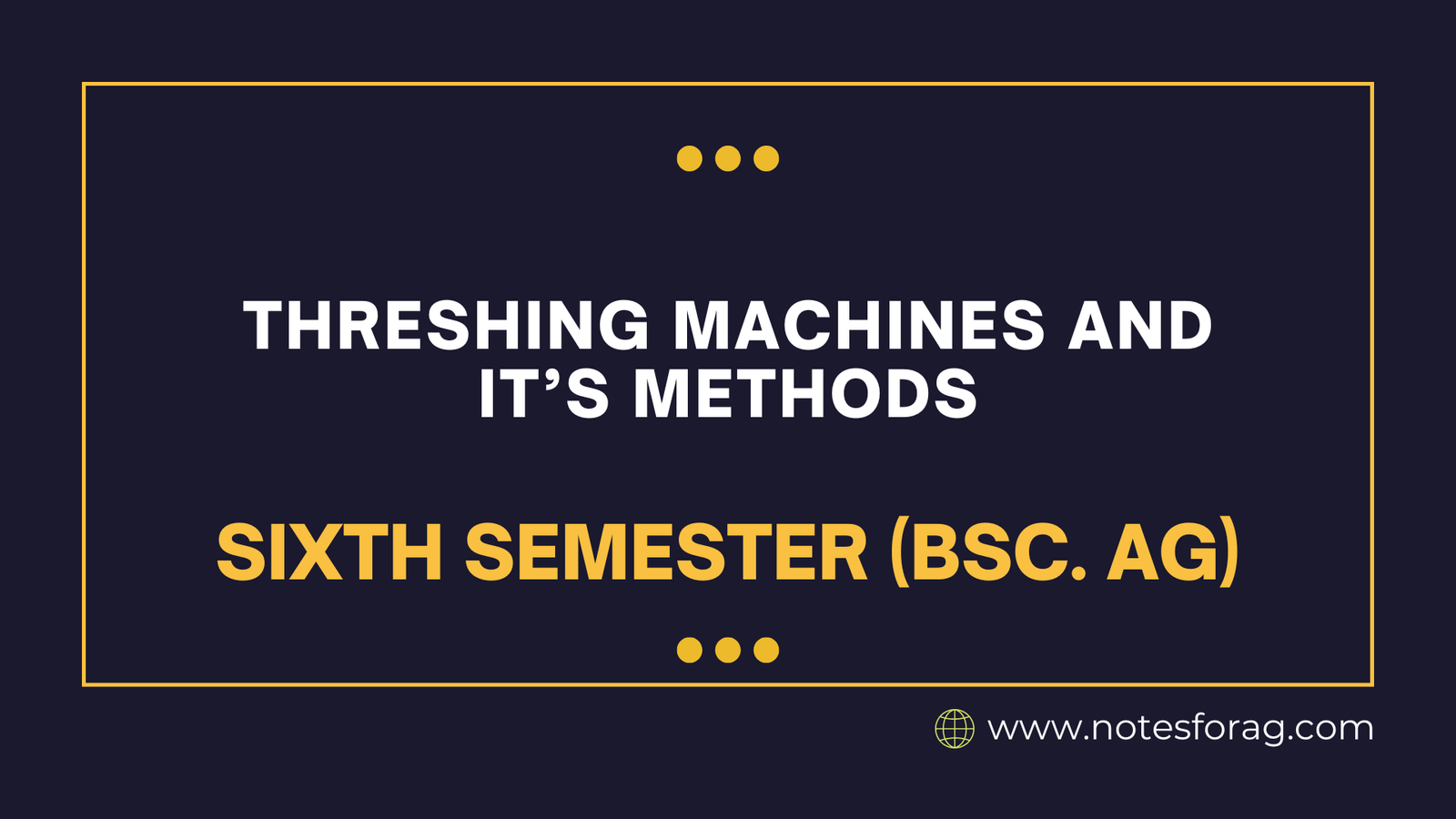Threshing Methods and Their Mechanization
Threshing is the process of separating grains from the harvested crop. Traditionally, it was done manually, but mechanization has made this process much more efficient.
Table of Contents
Traditional Methods:
- Manual Beating: Using sticks to beat the crop to separate the grains.
- Treading by Animals: Animals, such as oxen, walk over the crop spread on a hard surface to separate the grains.
- Hand-held Tools: Simple hand-held implements like flails are used to beat the crop.
Mechanized Threshing:
Mechanised threshing employs threshers, which separate the grain from the stalks more efficiently. Threshing machines can be independent or integrated with a combine harvester.
Types of Threshers, Working Principles, and Constructional Details
- Hammer Mill Thresher:
- Working Principle: Uses a series of hammers that rotate at high speed, impacting the crop and breaking the grain away from the stalk.
- Construction:
- A feed hopper guides the crop into the machine.
- Rotating hammers on a shaft.
- The concave surface beneath the hammers provides resistance to threshing.
- Use a screen or sieve to separate grain from other particles.
- Application: Suitable for crops like wheat, barley, and rice.
- Rasp Bar Thresher:
- Working Principle: Uses a rotating drum with rasp bars that rub against the crop to dislodge the grain from the stalks.
- Construction:
- A threshing drum mounted with rasp bars.
- A concave beneath the drum for threshing.
- One exit for grain, and another for chaff.
- Application: Commonly used for wheat, maize, and sorghum.
- Spike Tooth Thresher:
- Working Principle: Spike teeth attached to a rotating drum knock the grains out of the heads.
- Construction:
- A cylinder with spikes.
- Concave or sieve beneath the spikes to allow grain separation.
- An oscillating sieve for further cleaning.
- Application: Used for crops like wheat, barley, oats, and sorghum.
- Axial Flow Thresher:
- Working Principle: The crop moves axially through the machine, and a rotating drum with spikes or bars separates the grain.
- Construction:
- A cylindrical or conical drum with rasp bars or spikes.
- A concave below the drum for threshing.
- A fan to blow away chaff and other lightweight debris.
- Application: Effective for various crops, including rice and maize.
Factors Affecting Thresher Performance
- Moisture Content: A high moisture content in the crop might limit the effectiveness and cause grain breakage.
- Feeding Rate: Overloading the thresher might cause blockage and lower efficiency.
- Cylinder Speed: Grain separation is affected by the speed of the rotating drum or cylinder. Too fast a pace can cause grain breakage, whilst too slow can result in incomplete threshing.
- Concave Clearance: The distance between the drum and the concave must be adjusted according on the crop. Smaller grains necessitate tighter clearance.
- Crop Type: Different crops require different types of threshers, as some have harder husks or are more susceptible to damage.
Maize Sheller and Its Construction Details
A maize sheller is a machine specifically designed for removing kernels from the cobs of maize (corn).
Working Principle:
- The maize sheller works by feeding maize cobs into the machine. The cob is rotated and exposed to friction and impact forces that separate the kernels from the cob. The different kernels are then collected.
Construction:
- Feeding Hopper: Where the maize cobs are fed into the machine.
- Rotating Drum or Cylinder: The drum, fitted with special teeth or spikes, rotates to shell the maize.
- Concave Plate: A plate with a series of grooves that provides resistance for the cobs, allowing the kernels to be separated.
- Kernel Outlet: The outlet through which shelled kernels are discharged.
- Chaff Outlet: A separate outlet to discard the cobs or other residual materials.
- Motor/Power Source: Powers the rotating drum and any auxiliary components.
Frequently Asked Questions (FAQs)
What is the principle of threshing and what are the factors affecting it’s efficiency?
There are four threshing principles: impact, rubbing, combing, and grinding. Four types of contact models between grain and threshing components have been developed in tandem.
What is threshing and it’s method?
It is the process of separating grains from plants. These procedures can be performed in the field or on the threshing floor, by hand or with the assistance of animals or machinery.
Related Articles

